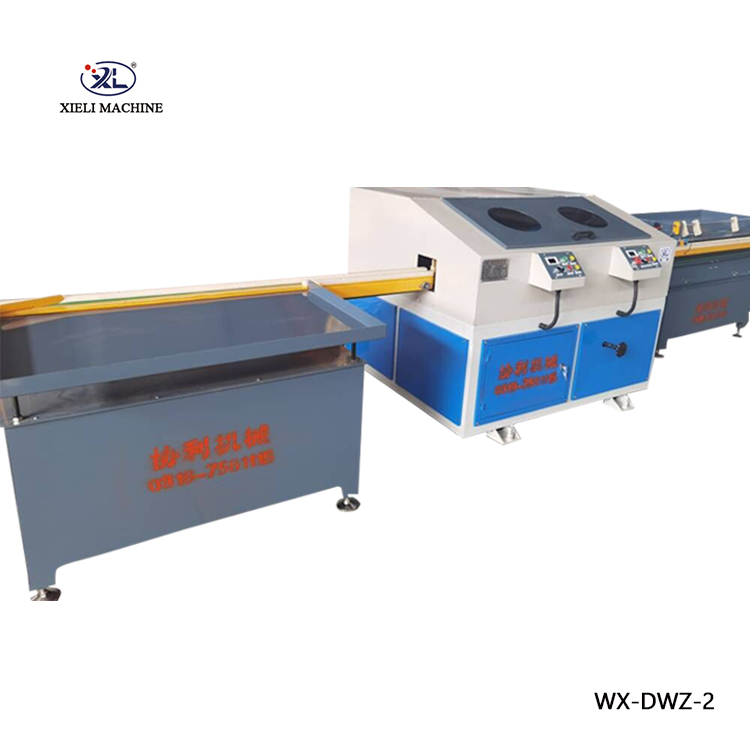The Importance of Pipe and Tube Polishers in Modern Industry
In a world where efficiency and precision are paramount, the significance of pipe and tube polishers cannot be overstated. These specialized tools and machines are essential in various industries, ensuring that metal pipes and tubes are polished to perfection. This article delves into the role of pipe and tube polishers, their applications, and the benefits they bring to manufacturing processes.
Understanding Pipe and Tube Polishers
Pipe and tube polishers are machines designed to enhance the surface finish of metal pipes and tubes. They work by removing imperfections, burrs, and any unwanted roughness, resulting in a smooth, shiny surface. This polishing process is crucial for several reasons, including aesthetics, corrosion resistance, and overall quality of the final product.
Applications Across Industries
Pipe and tube polishers find applications in a wide range of industries. In the automotive sector, for instance, polished exhaust pipes and fuel lines not only improve the appearance but also enhance performance by reducing friction and promoting better fluid flow. Similarly, the aerospace industry relies on polished tubing for fuel systems, hydraulic lines, and structural components to ensure safety and performance.
In the construction and architectural fields, polished stainless steel railings and piping are popular for their aesthetic appeal and durability. The food and beverage industry also benefits from polished tubes, as smooth surfaces are essential for hygiene and ease of cleaning in processing equipment.
The Polishing Process
pipe tube polisher

The process of polishing pipes and tubes typically involves several stages. Initially, the surfaces may be cleaned to remove any dirt or contaminants. Following this, a mechanical polishing apparatus is used, which can range from handheld tools to sophisticated automated machines. These machines often employ various techniques, including belt polishing, buffing, and abrasive finishing.
Belt polishing machines, for example, use abrasive belts to achieve a high-gloss finish on round or flat surfaces. They are versatile and can handle different materials, such as stainless steel, aluminum, and other alloys. On the other hand, buffing processes utilize soft materials combined with polishing compounds to enhance the shine of the surface further.
Benefits of Using Polishers
The primary benefit of employing pipe and tube polishers is the improvement in product quality. A polished surface not only looks better but also performs better. Smooth surfaces are less prone to corrosion and fouling, which can prolong the lifespan of pipes and tubes and reduce maintenance costs.
Moreover, polished tubes are easier to weld and join, leading to stronger and more reliable connections. This is particularly important in applications where safety and performance are critical, such as in pipelines and pressure vessels. Additionally, polished surfaces are more resistant to bacterial growth, making them vital in food processing and pharmaceutical applications.
Conclusion
In conclusion, pipe and tube polishers play a crucial role in modern manufacturing processes across various industries. Their ability to enhance surface quality, promote aesthetics, and improve performance makes them indispensable. As technology continues to advance, the capabilities of pipe and tube polishers will evolve, offering even greater efficiency and precision. Investing in high-quality polishing equipment can ultimately lead to better products, reduced costs, and increased customer satisfaction. Whether you are in the automotive, aerospace, construction, or food processing industry, polishing your metal pipes and tubes is a practice that should not be overlooked.
-
Discount High-Precision Surface Polishing Machine Durable & EfficientNewsApr.29,2025
-
High-Precision SS Square Tube Polishing Machine China SupplierNewsApr.29,2025
-
Stainless Steel Square Pipe Polishing Machine OEM & High-EfficiencyNewsApr.28,2025
-
Centerless Grinder Troubleshooting Fast Fix for OEM, China & Discount ModelsNewsApr.28,2025
-
Centerless Grinder Automation Solutions OEM & Precision Systems ChinaNewsApr.28,2025
-
Scarlo Centerless Grinder OEM High-Precision China Models & DiscountsNewsApr.28,2025


